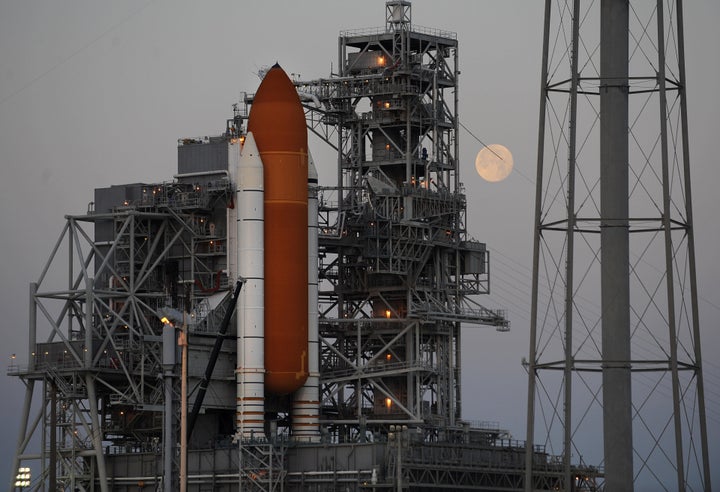
NASA released the President's FY2010 NASA Budget Request late last week, complete with a live webcast and a flurry of tweets from the agency's many official Twitter accounts. Always a topic of interest among space enthusiasts, this year's budget request is being observed particularly closely by a broadening audience of space entrepreneurs and investors to see what clues it might provide to some large question marks looming over the agency.
NASA's entire exploration agenda has come into question in the media recently. President Obama has not yet named a replacement for former NASA Administrator Mike Griffin, taken by some as a sign of the White House's lack of interest in the agency. In recent days, rumors have begun to swirl that the agency's goals for the next decade--establishing human outposts on the Moon and building the capacity for eventual trips to Mars--may be partially or even completely overhauled. These flames were fanned by the recent Congressional testimony of acting agency head Chris Scolese, who indicated that NASA was still not fixed on its lunar plans, and by a recent decrease in the number of crew to be carried by Orion, NASA's next generation space capsule. That news was all capped by an additional announcement on Thursday that the White House is commissioning an independent review of NASA's human space flight activities, headed by Norm Augustine, the former CEO of Lockheed Martin.
The bulk of the speculation to date has dealt with the fate of the Ares family of rockets. Almost from the moment that the preliminary Ares designs were announced, Ares has been the target of skepticism and critique from many in the aerospace community. Chief among the complaints were those that indicated that the development of a new rocket fleet might be wholly unnecessary. Specifically, one camp have argued that NASA could achieve its goals by launching Orion atop any of a number of existing Evolved Expendable Launch Vehicles, such as the Atlas and Delta rockets designed decades ago by Lockheed Martin and Boeing under contracts with the DoD. A competing camp argues that NASA could achieve more for even less money by relying on an emerging fleet of privately funded vehicles developed by companies like Orbital Sciences and Elon Musk's SpaceX.
The fact that these private companies are in the discussion at all largely stems from an innovative NASA program called COTS, Commercial Orbital Transportation Services. Announced in 2006, COTS was NASA's biggest step to date in proactively engaging emerging private rocket fleets, providing a total of around $500 million to two firms who could develop rockets and capsules capable of carrying cargo to the International Space Station. Uniquely---at least by civil aerospace standards--the COTS awards assumed that the companies would match's NASA's funding with private investment, and also provided NASA with several jump-off points where contracts could be terminated and payments stopped if the contractors were not up to spec.
COTS has been proceeding relatively smoothly; enough so that NASA moved forward with Commercial Cargo Resupply Service contracts, setting aside nearly two billion dollars for flight demonstrations. Lately, a new segment of COTS that covers the development of vehicles that carry human crews has been discussed. A document submitted to Congress by NASA in late April indicates that as much as $150 million may be set added to the COTS program, with some chunk of it, potentially $80 million, used to seed the development of the crew-carrying systems.
And so, aerospace entrepreneurs and investors will join the legions of traditional space enthusiasts in watching the news out of NASA Headquarters with great interest. Last week's budget request provided a few clues, but the results of the just-announced blue ribbon panel and the eventually nomination of a new NASA Administrator will provide great insight into the future of America's civil space exploration program. Large sums of money could potentially swing between the Ares development team, existing EELV operators, and a new class of emerging entrepreneurial firms, with the potential of billions of dollars in business being reassigned. Both NASA's ultimate destination and the rockets they use to get there may hang in the balance.